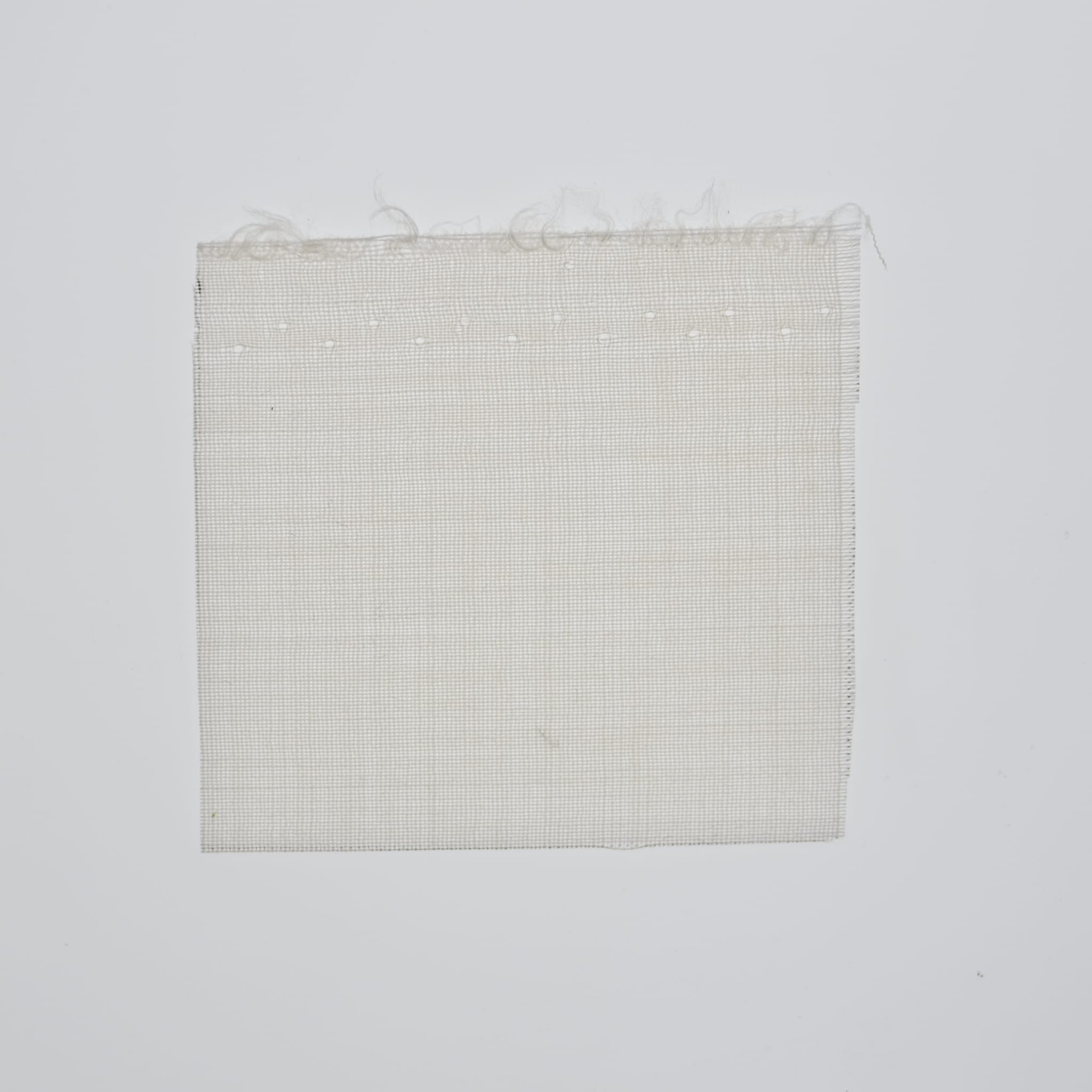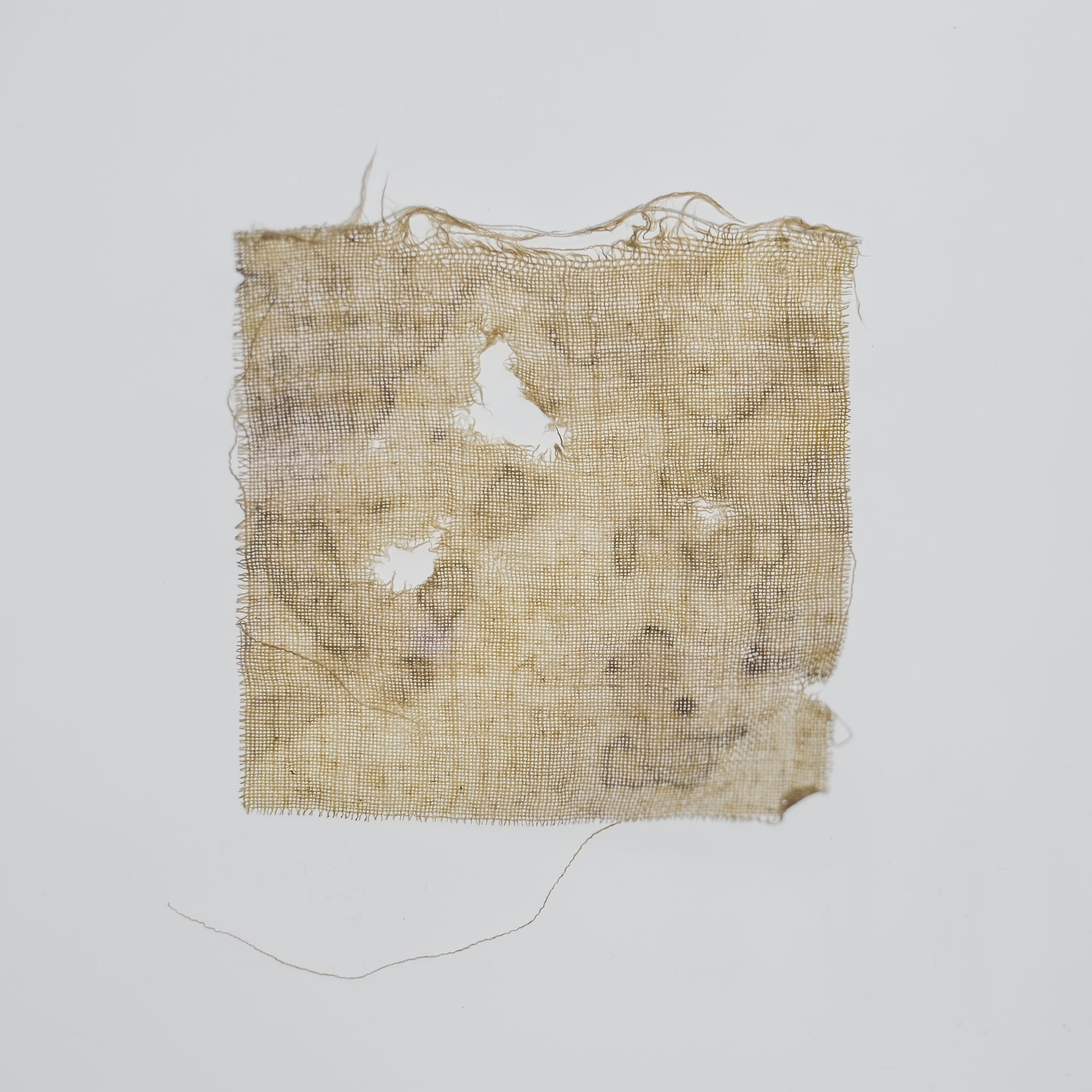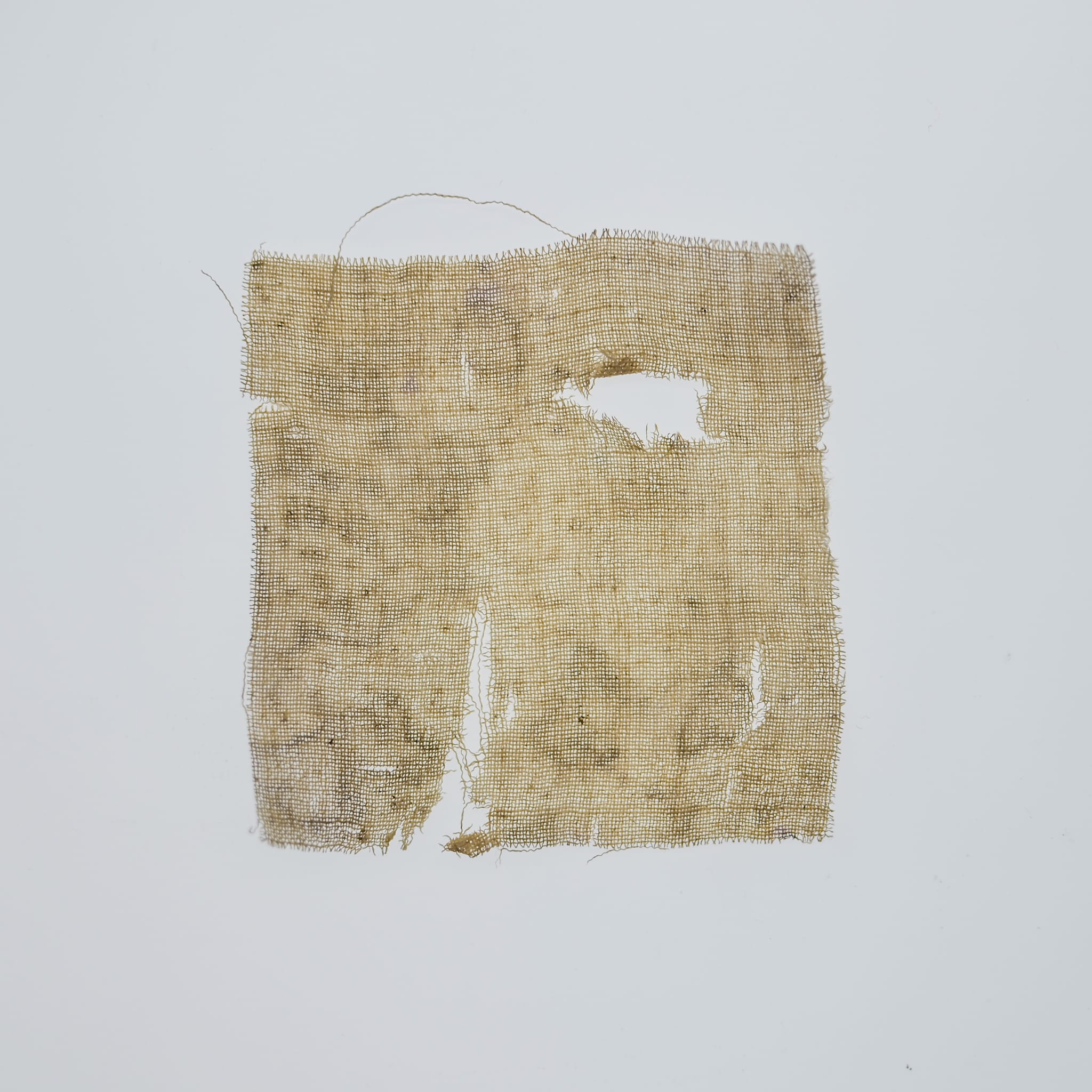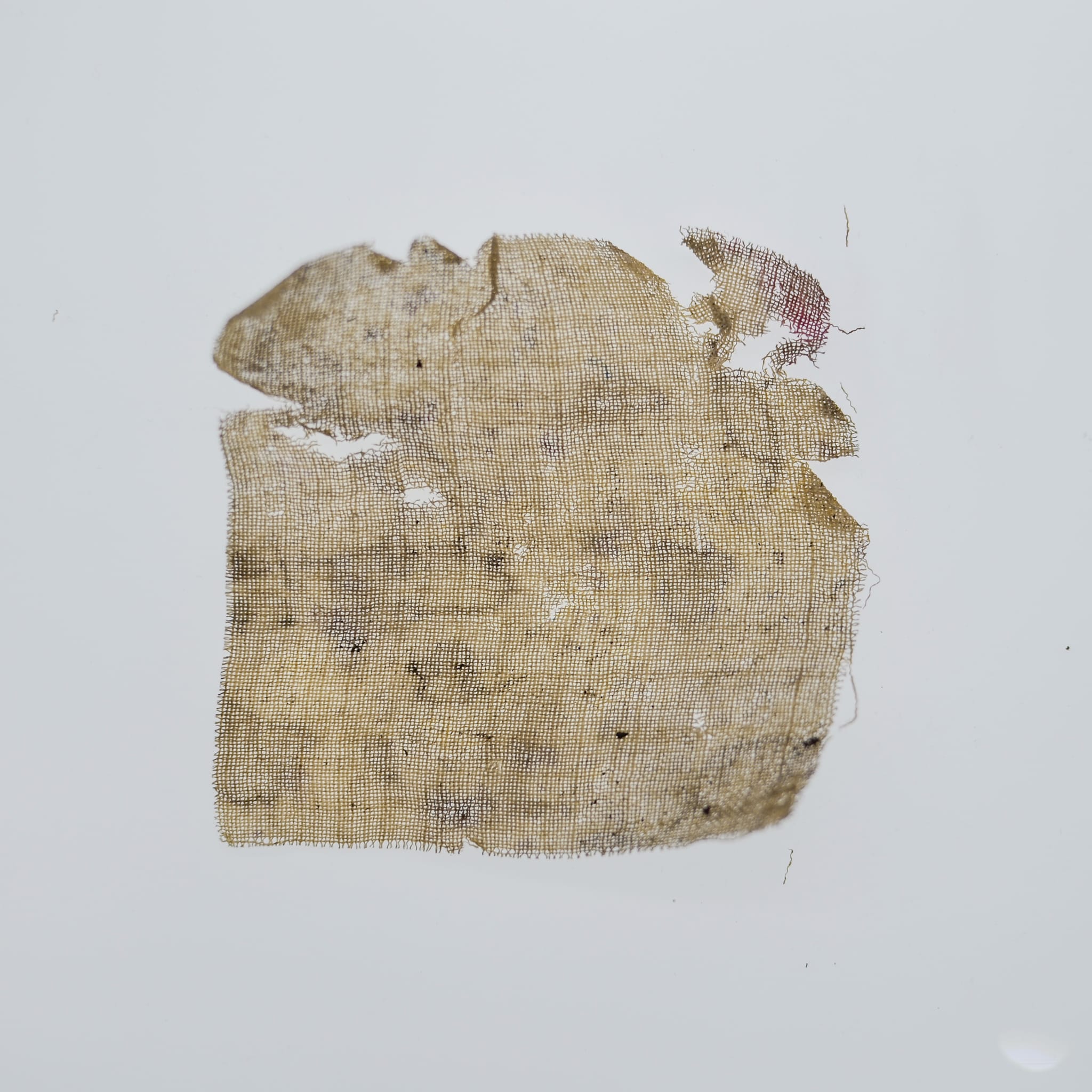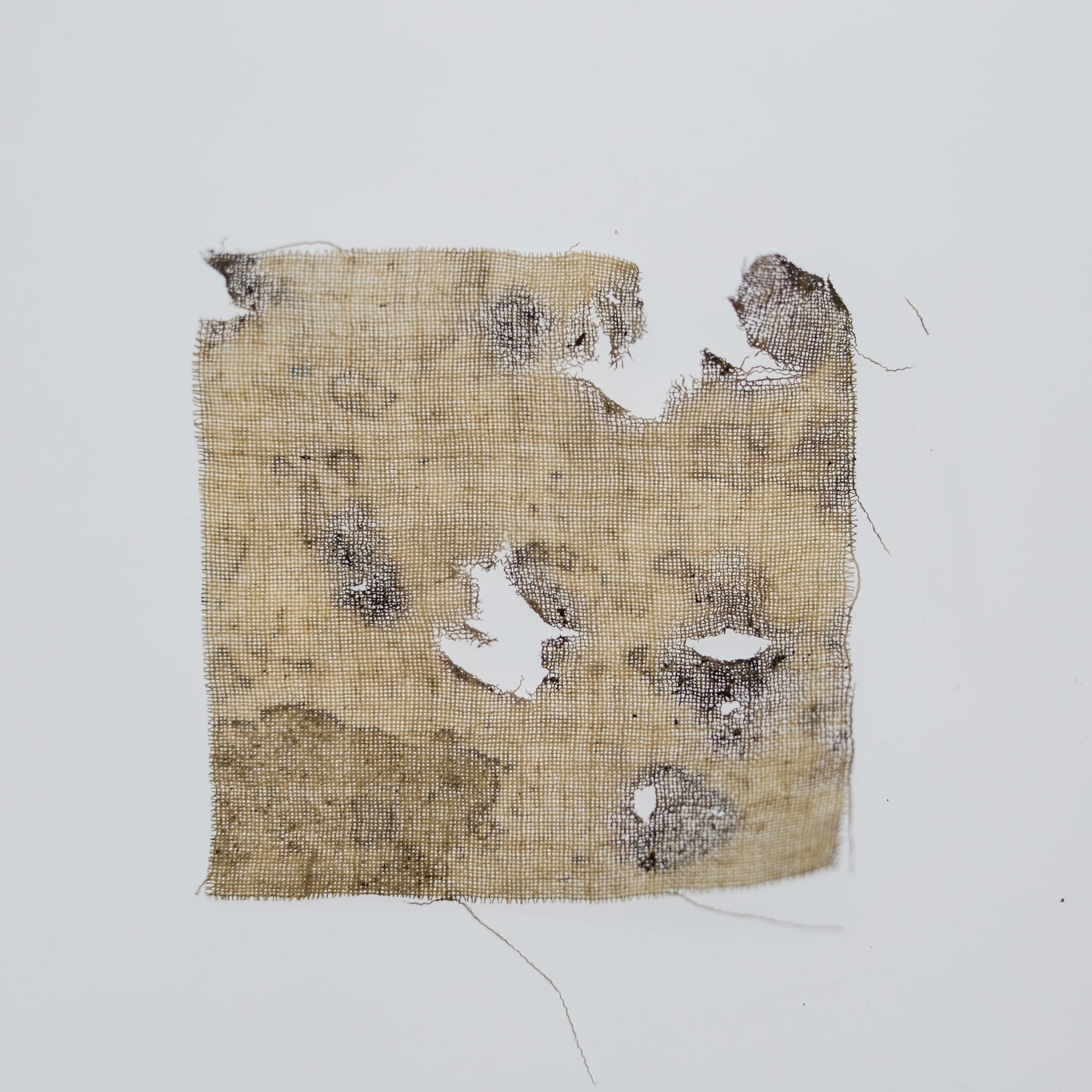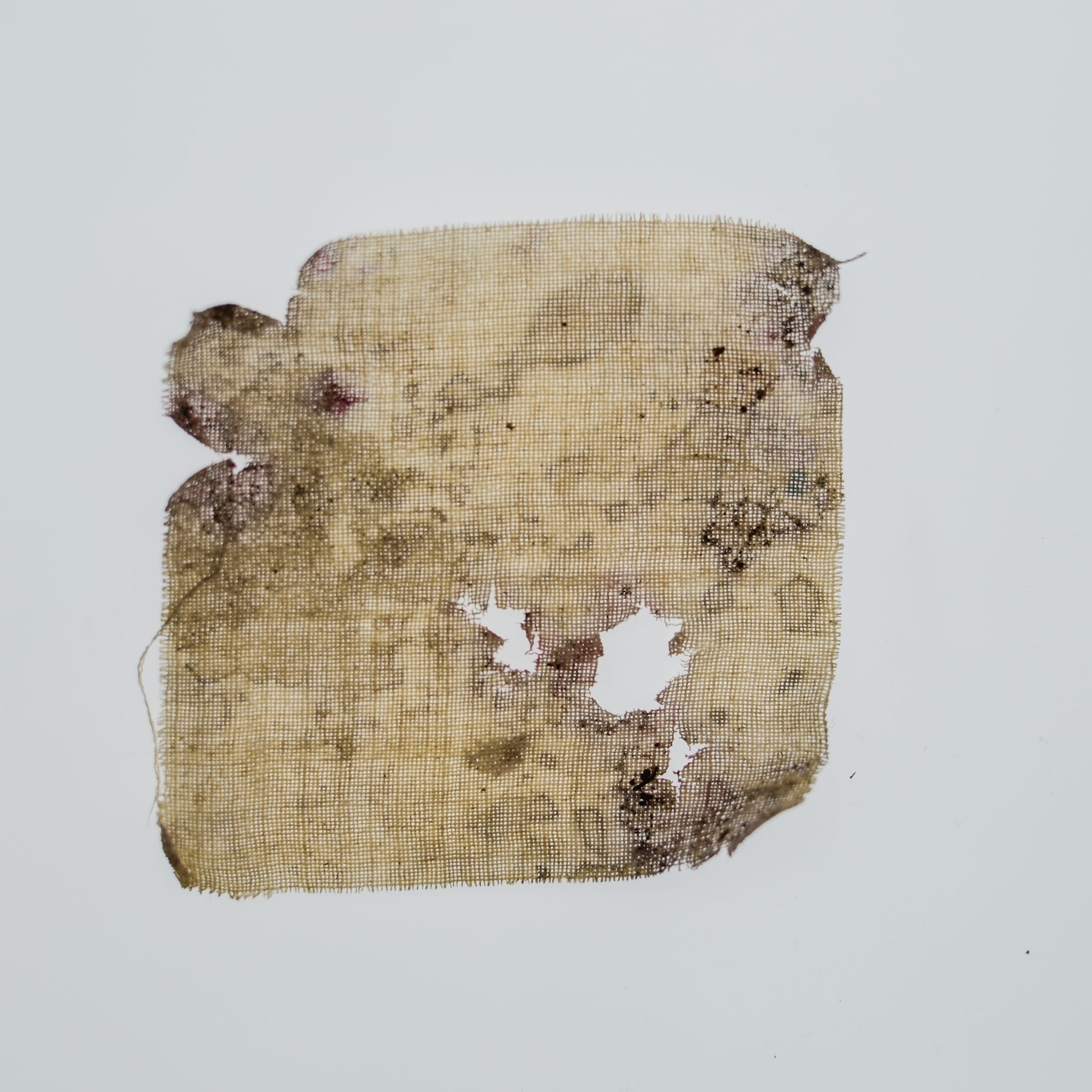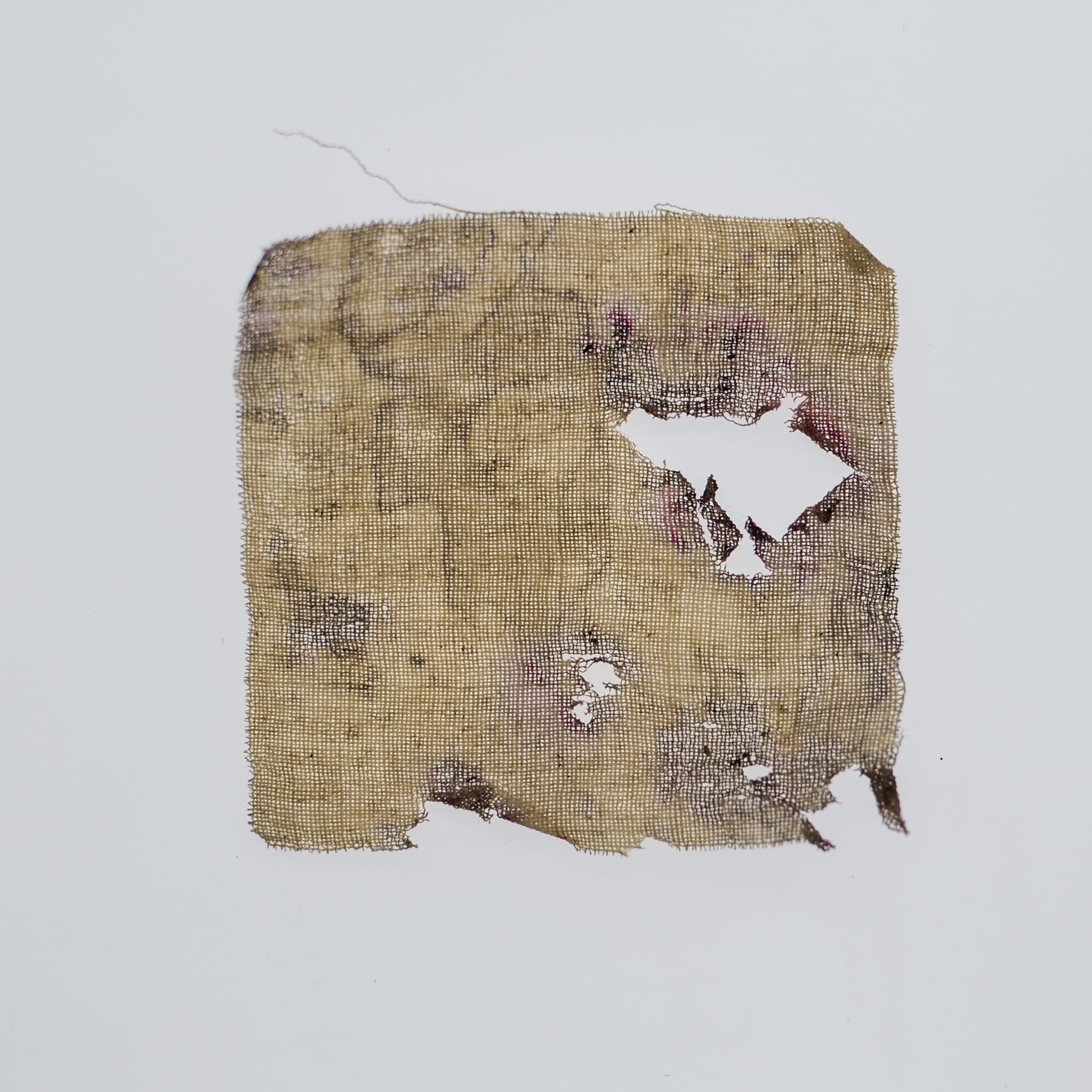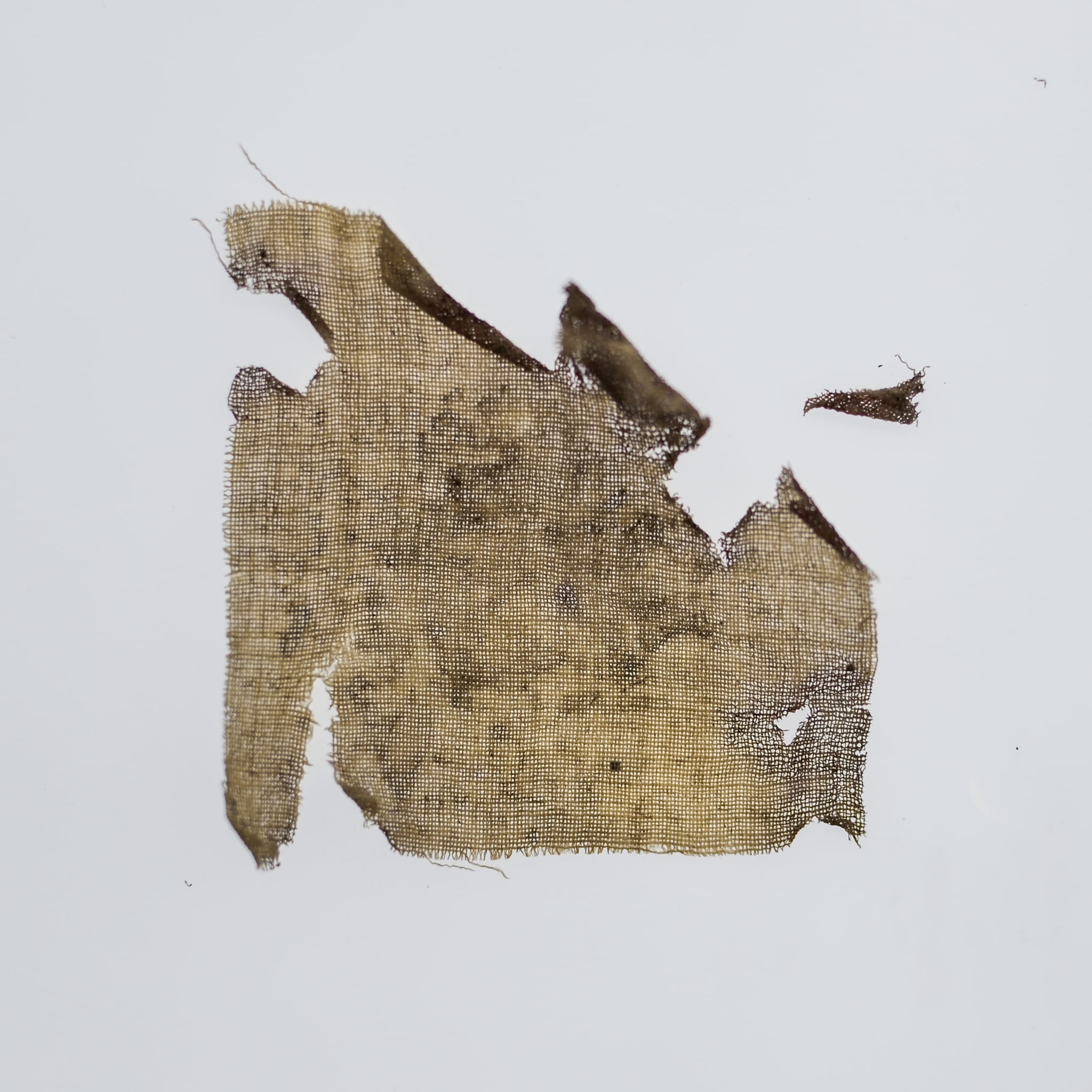ID:Wool 01
Start Date:06.06.2023 - 12.09.2023
Material:100% Wool
Fibre:Protein Fibre
Temperature:29°C
Sample Size:75x75
Notes:
Original colour: Ecru, unbleached
More about Wool:
Wool is a protein fibre, derived from hairs of various mammals, such as sheep, goats, rabbits, and camelids. These hairs, after they are collected, carded and spun into yarn to be woven into wool textiles. Prior to domestication, sheep's fleece was more hairy than woolly, though selection by breeders made sheep gradually become woollier.
Its application varies based on its source which directly impacts its coarseness. There are many types of woollen fabrics, such as merino - mostly used for suits and fine knits, to camel wool, which, due to its coarseness, is used more on the outside layers of clothing.
Properties:
Wool is very popular for its excellent thermal insulating properties. Other than that, compared to other cellulose and synthetic textiles, wool is fire-resistant and in contact with fire it chars and self-extinguishes, making it excellent for thermal insulation of buildings.
Decomposition:
As a protein fibre, the decomposition is slow and steady, with minimum time necessary to see any significant deterioration is 3 months. Whilst wool is fully biodegradable, this process, depending on the wool itself, as well as external environments, varies anywhere from 3 months to 2 years (Williams, 2020).
This is mainly because wool is a keratin fibre. Since microbial degradation of keratin is not widespread in nature, keratin can serve as an efficient defence, in this case of sheep, even against microbial attack (Lange et al., 2016). Therefore wool garments have a generally high lifespan and retain relatively good quality than other fibres (Lebedytė & Sun, 2021).
